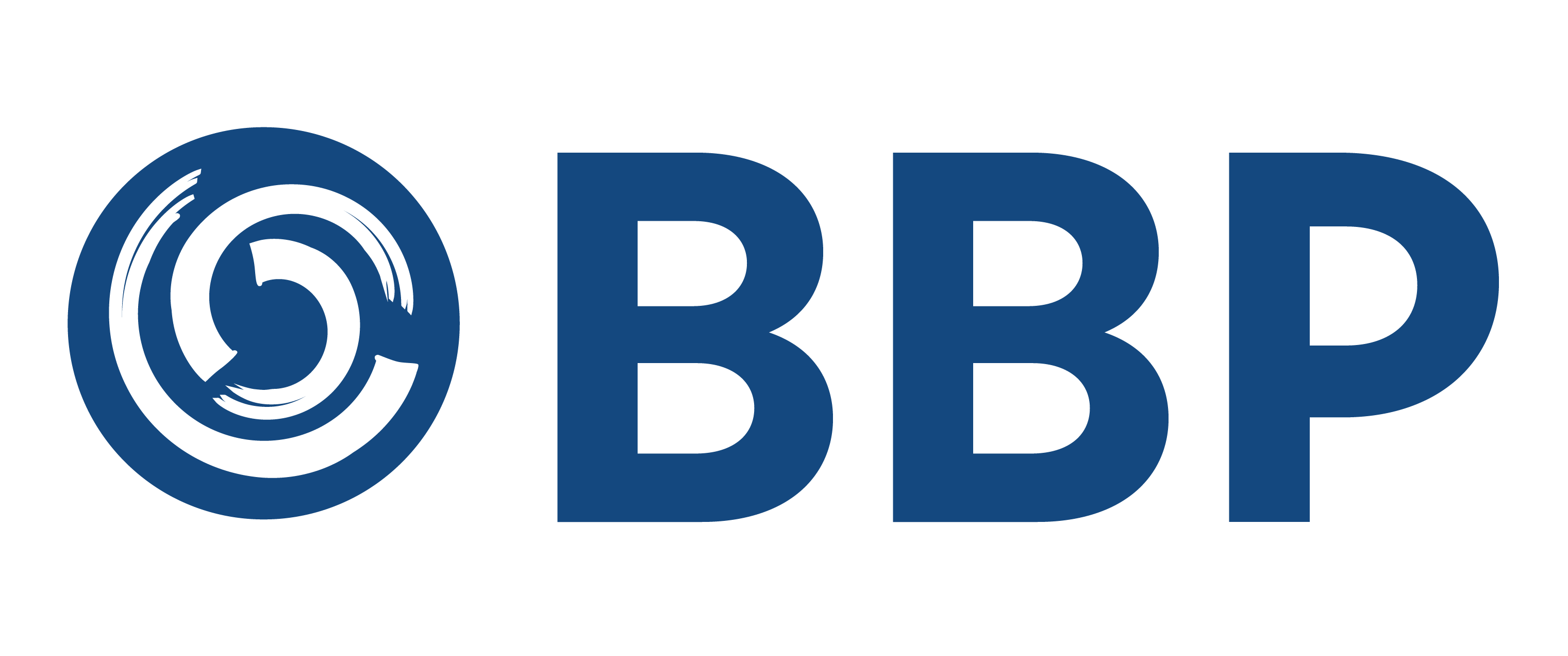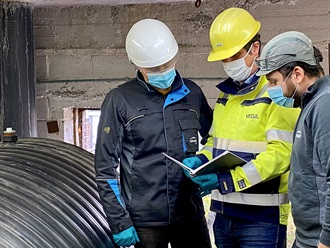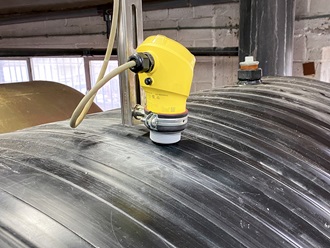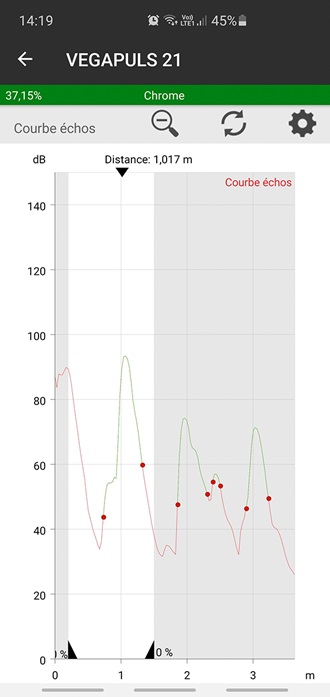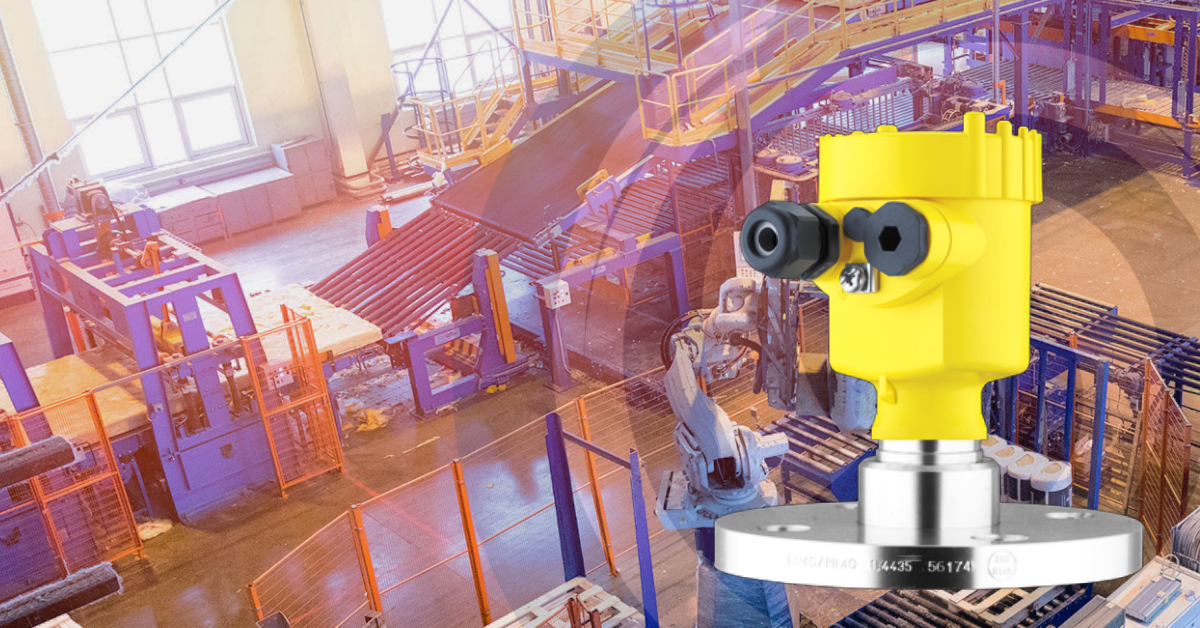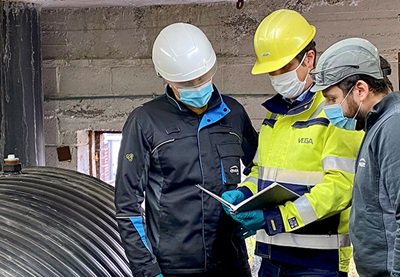
Radar level transmitter VEGAPULS 21 protects against overfilling
Looking for good protection against overflow
Chromium is not easy to handle because it is dangerous due to its possible effects on health and the environment. Therefore, the collected chromic acid solution is stored in a double-walled HDPE tank to prevent leakage and thus environmental damage. The operator was also looking for a reliable measuring system to accurately track the level of the aggressive chromium solution in the tank. The tank capacity should be used to the fullest extent possible, but under no circumstances should it be exceeded, causing an overflow.
Until recently, ultrasonic technology was generally used for level measurement in wastewater treatment plants, basically for economic reasons. However, when VEGA launched a new sensor series based on radar measurement technology in early 2020, new perspectives opened up. The compact radar instruments VEGAPULS (series 10/20/30) are comparable with ultrasonic instruments in terms of cost but are much more reliable and user-friendly.
A simple solution protects employees
“I was looking for a level solution that would pose no risk to my employees,” explains Laurent Roumieux, team leader at ENGIE. “Up to that point, we had been using an ultrasonic measuring system from a competitor. Not long ago I installed a non-contact radar sensor on an HDPE tank filled with hydrochloric acid (HCl). My VEGA contact helped me select the instrument and set it up. I was quite impressed because I was able to check the level just by mounting the sensor over the top of the HDPE tank. This solution was very simple and, above all, safe and worry-free. The sensor has provided reliable measurement data ever since it was put into operation.”
Due to this positive experience, Roumieux thought about the possibility of installing this sensor on the tank holding the aggressive chromium solution. The application was not identical; in fact, it was much more complex because the tank was cylindrical and double-walled. Nevertheless: “In the meantime I had gained experience with the new VEGA radar measuring instruments and therefore decided to go ahead and install a VEGAPULS 21.”
Good signal focusing provides more accurate readings
The VEGAPULS 21 is part of the new compact series of radar level sensors from VEGA. The beating heart of these new sensors is a radar microchip that was newly developed by VEGA and specially optimized for the requirements of level measurement. Thanks to the small design, very compact sensors are now possible.
80-GHz technology means that the radar beam can be aimed at the measured medium with pinpoint accuracy. The technology enables the real level signals to be better distinguished from interfering signals − the measuring process itself thus becomes much easier and more precise than other measuring methods. As a result, no incorrect measurements arise from deposits or internal installations, such as pipes, probes or pumps, in double-walled tanks or in narrow shafts. This means that – in contrast to ultrasonic sensors – no false signal suppression is necessary. Besides being unaffected by temperature fluctuations, vacuum or high pressures, radar sensors are, most importantly, not sensitive to buildup on the sensor. These are all factors that can often cause other types of measuring devices, such as ultrasonic level transmitters, to malfunction. What is more, radar sensors have a wide dynamic range that guarantees reliable level measurement even if there is strong signal damping.
Features that literally predestined VEGAPULS 21 for this application. “I didn’t need to make any openings in the double-walled tank to install the sensor. This is interesting for several reasons. For one thing, the measuring system is very safe because, when handling the sensor, my staff never comes into contact with the chromium solution and thus there is no risk of an accident happening during installation,” says Roumieux, stating the most important advantage. “And for another thing, I didn’t need to drill holes in the tank to install a mounting flange for the sensor. This prevents damage and also eliminates the cost of fitting a suitable flange.”
Another advantage is that the new compact sensors measure right up to the edge of the container without a blocking distance. With ultrasonic sensors, on the other hand, the optimal adaptation of the sensor is made more difficult because the blocking distance is greater and the maximum range is thus reduced. This doesn’t matter with radar sensors – the blocking distance is much smaller and even heavily soiled sensors still deliver exact measurement values. This allows the total volume of the tank to be utilized.
View into the tank via the app
For the technical team at ENGIE, the new sensor not only brought more safety in handling, it also made installation faster. Thanks to the VEGA Tools app, which makes use of the tilt sensor integrated in smartphones, it was easy to align the radar sensor perfectly to the cylindrical tank. Technician Yannick Crouquet, who was in charge of installation and commissioning, found this application extremely practical. “It means that I don’t need to bring along a spirit level or a scaffold on the tank to align the sensor.”
But Crouquet is also enthusiastic about the app for other reasons. “I can connect directly via my smartphone and the free VEGA Tools app.” Sensors that have the display/adjustment module PLICSCOMwith Bluetooth can be wirelessly adjusted with the app. The intuitive user interface of the app makes it easy to configure a sensor and put it into operation. What is more, the user can read the current measured value or sensor status at a glance. And all relevant information about the VEGA instrument can be retrieved just by entering the serial number. This facilitates later maintenance work.
This is a perfect solution for the sensor installed on the chromic acid tank, which is difficult to access because mounting and movement on the cylindrical HDPE tank should be avoided. Yannick Crouquet explains: “Thanks to the VEGA Tools application, I was able to monitor the measuring results and the signal quality of the probe remotely during the first few days of operation. After a few days of observation, I knew that VEGAPULS 21 was working and I could concentrate on other tasks again. It’s also much easier to access the parameters later and reconfigure the new level sensors, if necessary. It’s a real-time saver and far less restrictive.”

